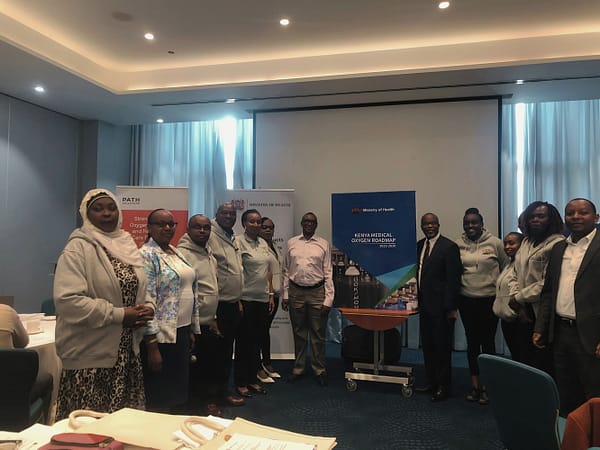- Home
- Blog
Oxygen Alliance Blog

Celebrating Women in Biomedical Engineering in Kenya: Together We Engineer a Healthier Future
NAIROBI, KENYA – June 23, 2025 – As the world celebrates International Women in Engineering Day (INWED) today, the focus turns to the collective power of collaboration under the timely theme, “Together we engineer.”

📰The Blueprint for Change: Data, Policy, and the Future of Healthcare
Imagine a surgeon unable to perform a life-saving operation because the hospital’s only anaesthesia machine is broken, a compromised diagnostics lab due to non-functional sterilization equipment, or a child struggling to breathe because an oxygen concentrator is out of service. This isn’t a hypothetical; it’s a daily reality born from a crisis of broken medical equipment that impacts patient survival across many low- and middle-income countries.

Malawi Mobilizes Experts to Strengthen National Biomedical Engineering Capacity, Enhancing Healthcare Delivery
LILONGWE, Malawi – 5 June 2025 – Oxygen Alliance, in close collaboration with Ministry Of Health Malawi , convened a national stakeholder meeting on 29 May 2025. The stakeholder meeting aimed to address the systemic challenges within Malawi’s biomedical engineering sector, a field essential for patient survival and effective healthcare services.

Oxygen Alliance Welcomes Engineering Institution of Zambia to its Pan-African Biomedical Engineering Community
The Oxygen Alliance is pleased to announce a strategic partnership with the the Engineering Institution of Zambia (EIZ) , marking a significant expansion of its collaborative network of biomedical engineering professional and regulatory bodies across Africa. The EIZ joins our growing community dedicated to advancing healthcare technology and professional development,

Kenya Launches National Medical Oxygen Roadmap
The newly launched roadmap leaves no stone unturned, providing a clear strategic framework designed to move Kenya from an emergency-response footing to a future of long-term, sustainable, and integrated oxygen systems, by addressing vital pressure points that the Oxygen Alliance continuously advocates for

Kenya Launches National Medical Oxygen Roadmap
The newly launched roadmap leaves no stone unturned, providing a clear strategic framework designed to move Kenya from an emergency-response footing to a future of long-term, sustainable, and integrated oxygen systems, by addressing vital pressure points that the Oxygen Alliance continuously advocates for.

Oxygen Alliance Newsletter | Q1 2025 |🚀 Building Momentum for Resilient Healthcare
Welcome to our first quarterly update for 2025! The start of this year has been marked by significant momentum, building upon the foundations laid in 2023 and 2024. It also unfolds against a backdrop of significant global shifts, including an evolving funding landscape that challenges traditional approaches. With this call towards greater efficiency, and recognizing this global shift, we are evolving, adapting, and innovating. We are moving beyond “business as usual” while remaining focused on our mission of building sustainable, resilient healthcare systems in low- and

Bridging the Gap: Ensuring Equitable Access to Medical Oxygen Through Investment, Training, and Biomedical Equipment Maintenance
The Commission reports that over 5 billion people lack access to safe and affordable medical oxygen services, with the largest inequities concentrated in low and middle-income countries (LMICs).
The Oxygen Alliance’s mission aligns with the Commission’s findings in several key areas:


